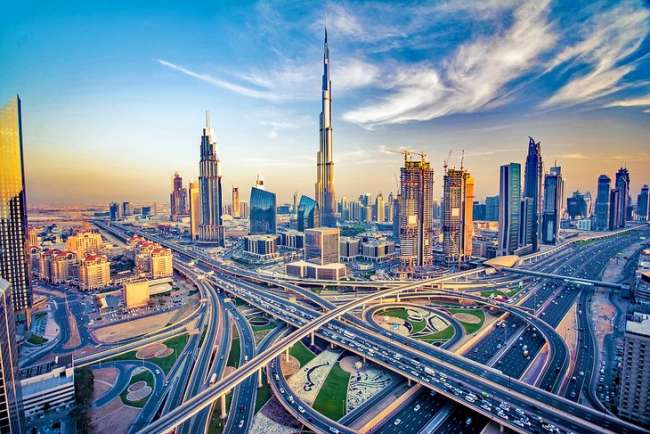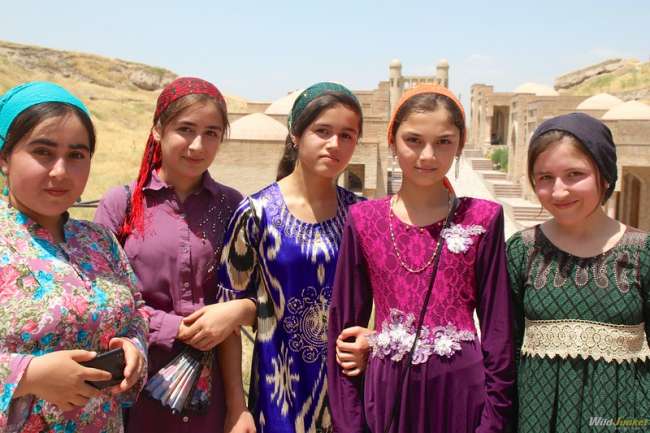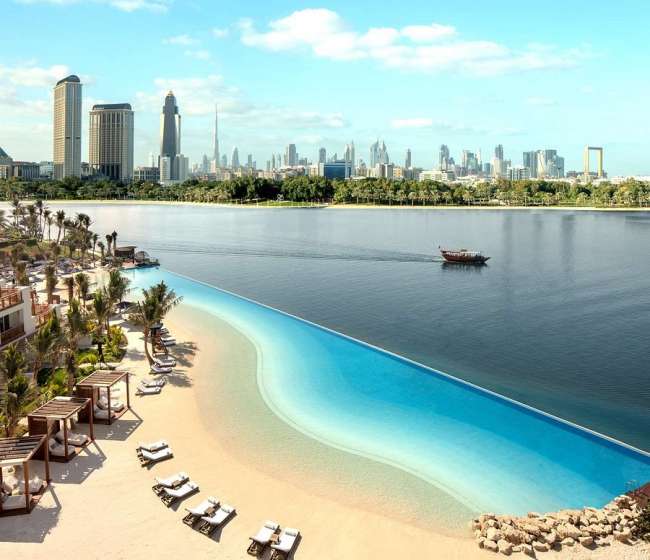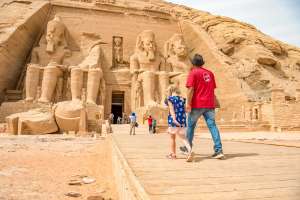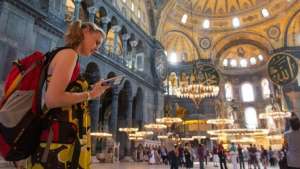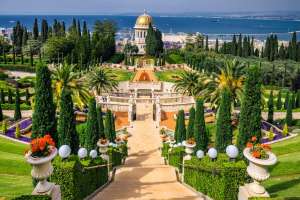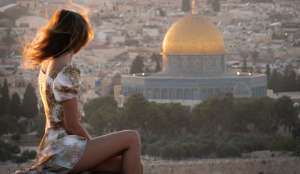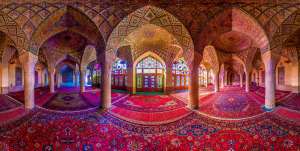Iran, a land celebrated for its timeless architecture and the warmth of its people, has long been a crossroads of civilizations. It’s a place where ancient empires once ruled, where poets found their muse, and where intricate artistry still thrives in every tile, dome, and garden. Beyond its beauty, Iran’s greatest charm is perhaps its people — friendly, welcoming, and proud of their heritage. The country tells stories of ancient civilizations and grand dynasties, of science, spirituality, and art woven together over millennia. With its lush gardens, bustling bazaars, and the scent of saffron and rosewater lingering in the air, Iran stands out as one of the most inviting destinations in the Middle East — one that every traveler should experience at least once.
Iran proudly holds a remarkable position among the world’s cultural treasures. By 2020, the country was home to 24 UNESCO World Heritage Sites, ranking among the top 10 nations globally for having the most cultural sites listed by UNESCO. Out of these, 22 are cultural and 2 are natural wonders — each a window into the soul of Persian civilization.
In addition, Iran’s intangible cultural heritage is equally impressive, with 14 traditions and cultural practices recognized by UNESCO. Together, these sites and customs form a living record of human creativity, history, and endurance.
It’s fascinating to note that by 2020, UNESCO had listed over 1,120 sites worldwide, drawing millions of visitors annually to monuments that embody humanity’s shared history. And as UNESCO reminds us, these treasures belong to all people — regardless of race, nationality, or religion. It is the shared duty of every nation to protect and preserve them, not as possessions, but as legacies for future generations.
Below is a detailed journey through Iran’s 22 UNESCO World Heritage Sites (as of 2020) — each a masterpiece in its own right, carrying the spirit of Persia through time.
1. Naghsh-e Jahan Square (Meidan-e Emam) – Isfahan
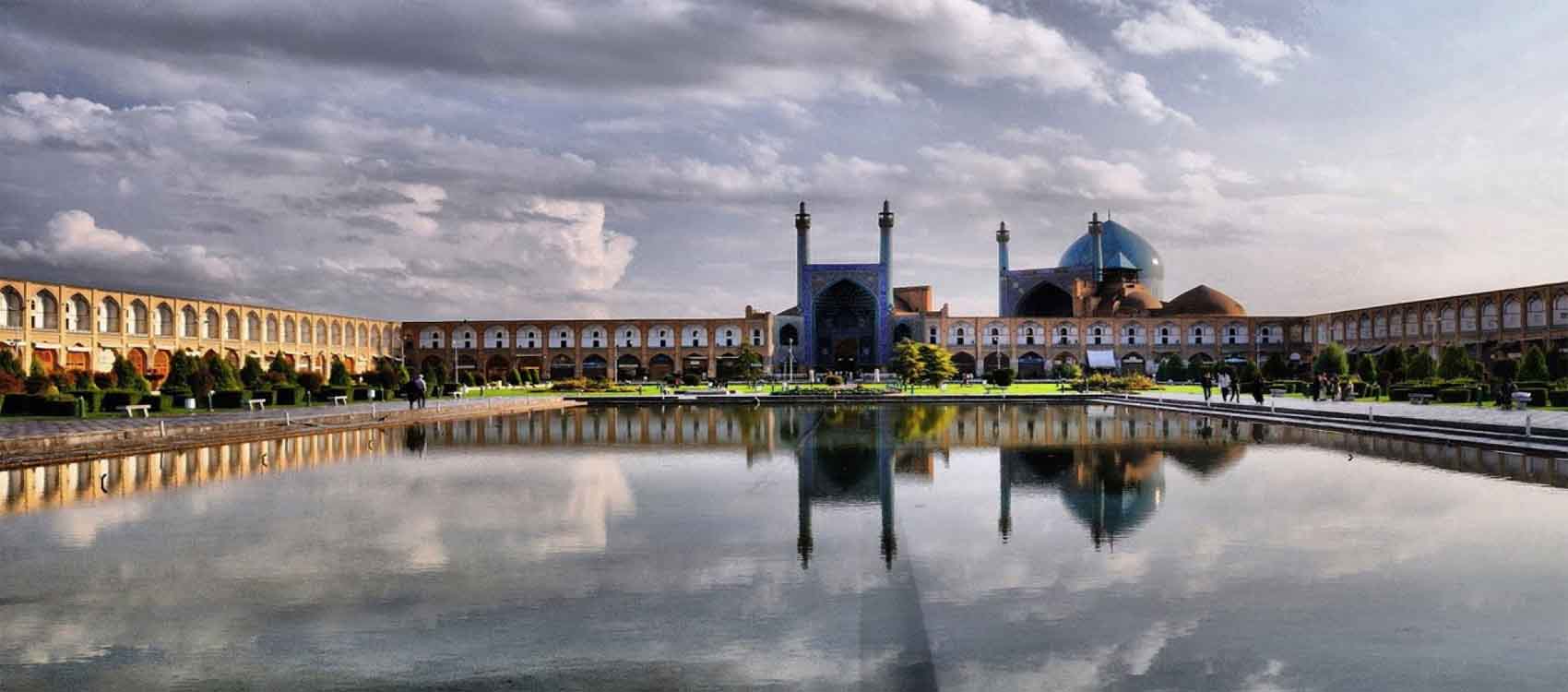
UNESCO describes this site as “one of the largest city squares in the world and an outstanding example of Iranian and Islamic architecture.” The name Naqsh-e Jahan means “Image of the World,” and indeed, it lives up to that title. Nestled in the heart of Isfahan, a city often called “Nesf-e Jahan” (Half of the World), this square captures the very essence of Persian artistry and vision.
Built between the 16th and 17th centuries under the Safavid dynasty, the square is surrounded by some of Iran’s most iconic landmarks — the grand Shah Mosque (now known as Imam Mosque) to the south, the elegant Ali Qapu Palace to the west, and the breathtaking Sheikh Lotfollah Mosque to the east. To the north stands the Qeysarieh Gate, a majestic entrance to Isfahan’s historic bazaar that dates back to the 15th century.
Walking through the square, one can feel the rhythm of Persian life — merchants calling from their shops, families gathering by the fountains, and the call to prayer echoing softly in the distance. Every tile and arch tells a story of a golden age when Isfahan was one of the greatest cities in the world.
2. Persepolis – Fars
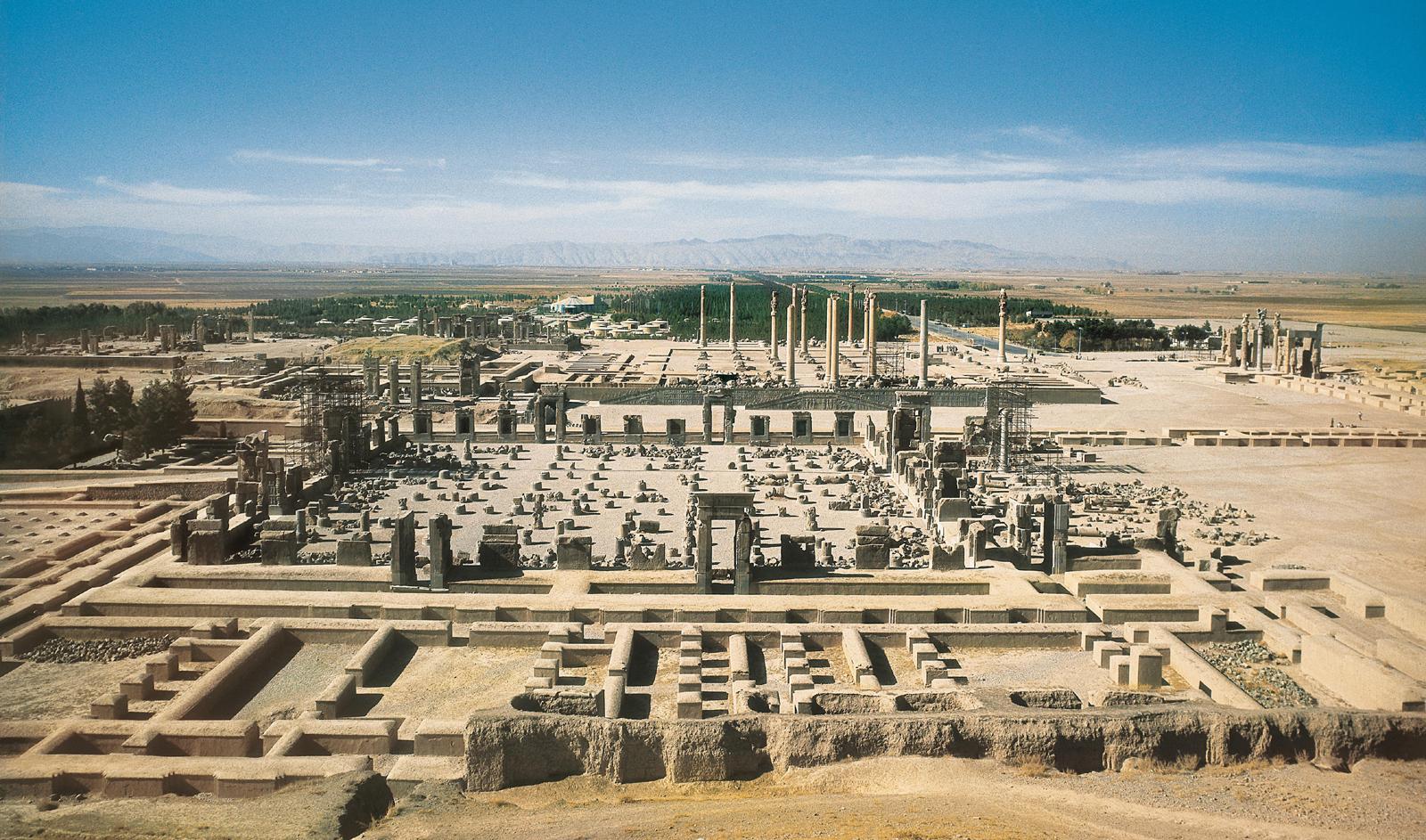
Few places on Earth can rival the grandeur of Persepolis, the ancient ceremonial capital of the Achaemenid Empire. Built under Darius the Great around 520 BCE, Persepolis was a city designed not just to rule but to awe. Its colossal stone terraces, monumental staircases, and intricate carvings once welcomed envoys from every corner of the known world.
When Cyrus the Great established his empire, he envisioned a kingdom built on tolerance and respect — where different cultures could coexist. This spirit continued under Darius I, Xerxes I, and Artaxerxes I, who expanded the complex into one of the most sophisticated architectural achievements of antiquity.
Even though Alexander the Great set the city ablaze in 330 BCE, Persepolis remains astonishingly well-preserved. Today, visitors walk among the same columns that once supported royal audiences, feeling the echoes of an empire that shaped history.
3. Tchogha Zanbil – Khuzestan
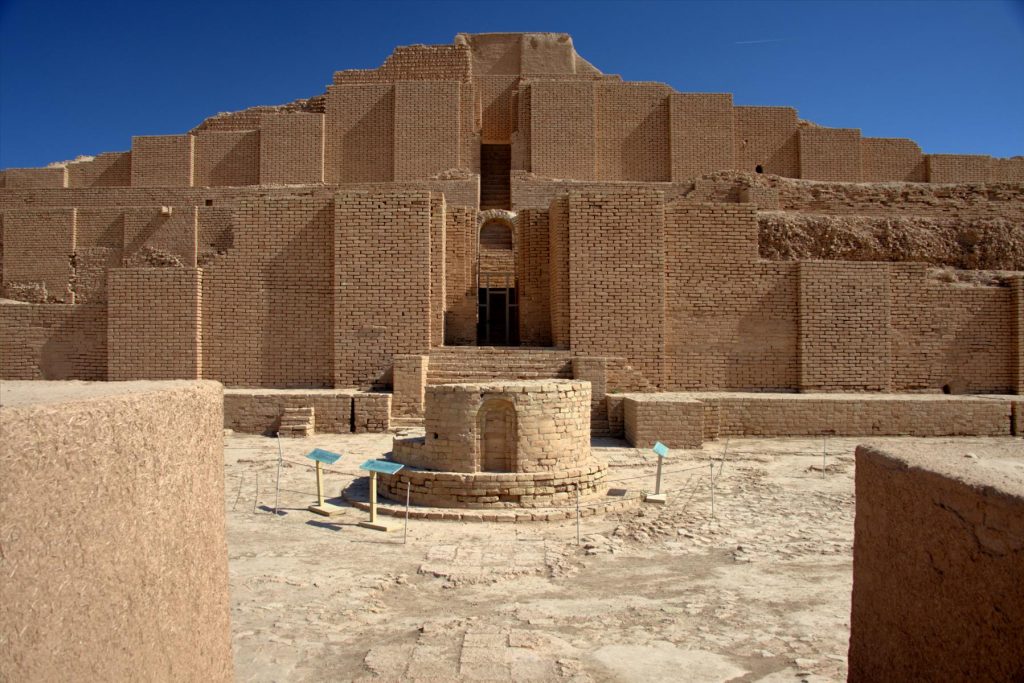
Rising from the plains of Khuzestan, the Tchogha Zanbil Ziggurat stands as a monumental tribute to Elamite civilization. Built around 1250 BCE by King Untash-Napirisha, it was dedicated to the gods Inshushinak and Napirisha.
Originally standing over 50 meters tall and composed of five terraces, this stepped pyramid remains one of the best-preserved ziggurats outside Mesopotamia. Constructed from sun-dried mud bricks, it represents both architectural ingenuity and spiritual devotion.
The temple’s design followed precise astronomical alignments, symbolizing the connection between heaven and earth. Even now, the air around Tchogha Zanbil feels ancient — quiet, heavy with history, and full of mystery.
4. Takht-e Soleyman (Throne of Solomon) – West Azerbaijan
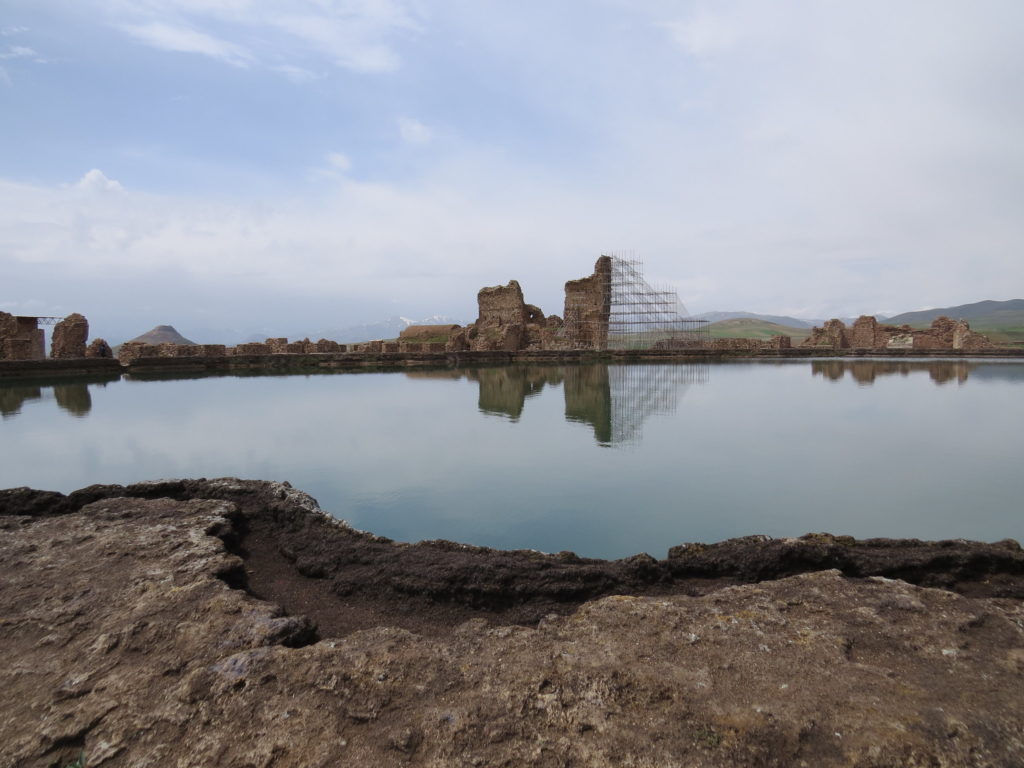
High in the mountains of northwestern Iran lies Takht-e Soleyman, or the “Throne of Solomon,” a sacred complex where nature and faith intertwine. Centered around a serene volcanic lake, the site was once a major Zoroastrian sanctuary dedicated to Anahita (the goddess of waters) and the sacred fire.
Built during the Sasanian Empire, Takht-e Soleyman was a royal sanctuary and spiritual capital. Its layout perfectly reflects Zoroastrian cosmology — a microcosm of the world divided into elements of fire, water, earth, and air. Though it was destroyed at the fall of the Sasanian dynasty, parts were revived centuries later under Mongol rule.
The shimmering turquoise lake and the remains of ancient temples make this site feel timeless — an untouched mirror of the Persian soul.
5. Bam and Its Cultural Landscape – Kerman
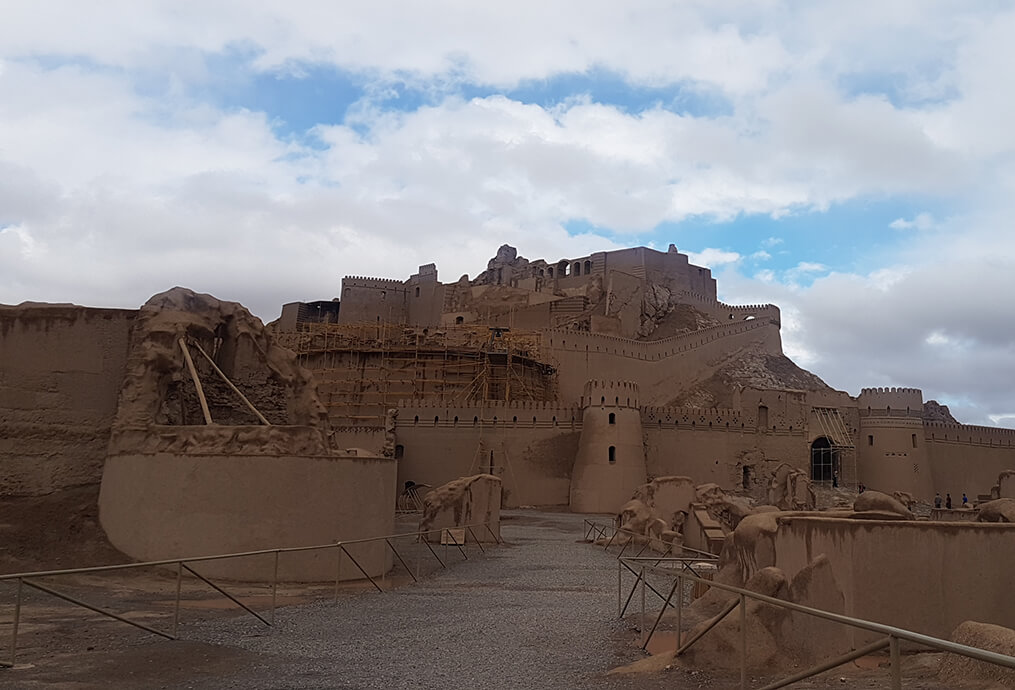
In the heart of the Kerman desert stands Arg-e Bam, the world’s largest adobe citadel. Once a vital stop on the Silk Road, Bam flourished from the 7th to 11th centuries as a bustling center of trade and craftsmanship. Yet its origins stretch much further back — possibly to the 4th century BCE.
Built entirely of sun-baked clay and using a unique layering technique known as Chineh, Bam’s fortress city was a masterpiece of adaptation to the desert climate. Its labyrinth of narrow alleys, towers, and courtyards reveal how ancient engineers combined practicality with elegance.
Though tragically damaged in the 2003 earthquake, restoration efforts have brought much of its magic back to life. Today, walking through Bam feels like stepping into a silent epic — one written in dust, sunlight, and resilience.
6. Pasargadae – Fars
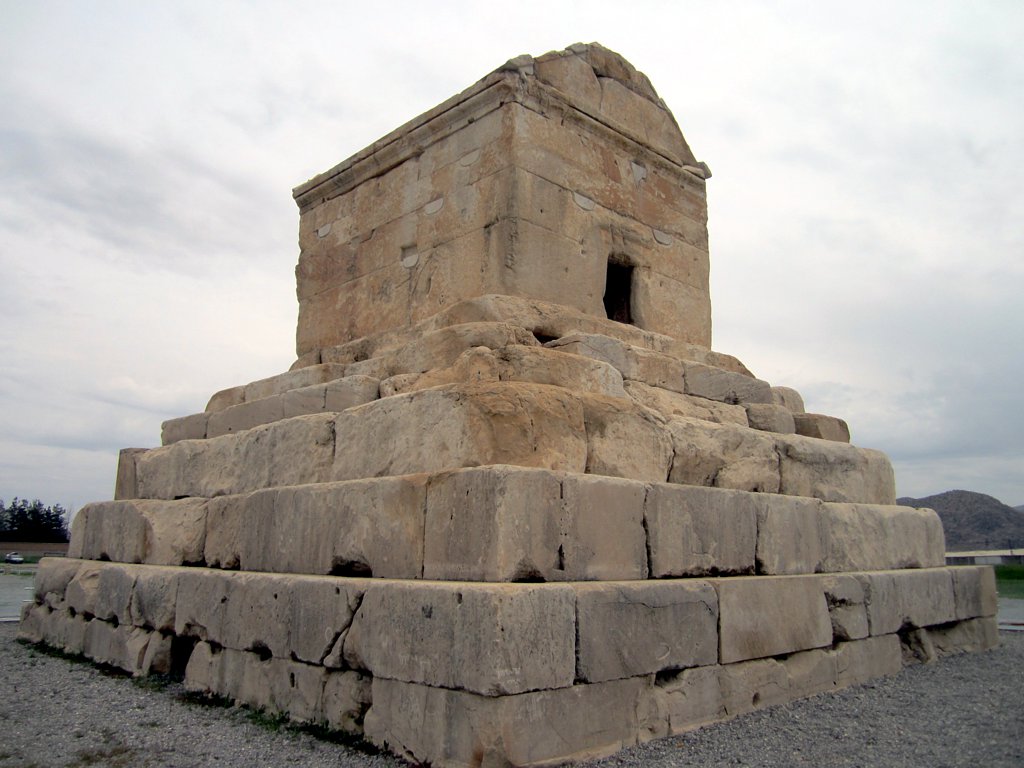
Before Persepolis rose to glory, Pasargadae served as the first capital of the Achaemenid Empire and the final resting place of Cyrus the Great, the visionary founder of ancient Persia. His simple yet majestic tomb — a stepped stone structure with a small chamber at the top — reflects his humility and strength.
Built in the 6th century BCE, Pasargadae introduced architectural elements that influenced Persian design for centuries: grand gardens, symmetrical layouts, and monumental gateways. The site reflects a worldview that celebrated unity and respect — values that Cyrus himself embodied, famously allowing conquered peoples to worship freely.
As the dawn light touches the limestone tomb, it feels as though time itself pauses in reverence for one of history’s greatest leaders.
7. Soltaniyeh Dome – Zanjan

In the city of Soltaniyeh stands one of the most awe-inspiring domes in the world. Built in the early 14th century as the mausoleum of Sultan Öljaitü, the Soltaniyeh Dome is an architectural marvel — the third largest brick dome on Earth, following Florence’s Santa Maria del Fiore and Istanbul’s Hagia Sophia.
The dome’s double-shell design was revolutionary, influencing countless Islamic structures across Persia and beyond. Inside, a network of stairways and corridors weaves through vibrant tilework and calligraphy, creating an ethereal play of light and shadow.
Every glance upward leaves one humbled — as if the ceiling itself were suspended between heaven and earth.
8. Bisotun – Kermanshah
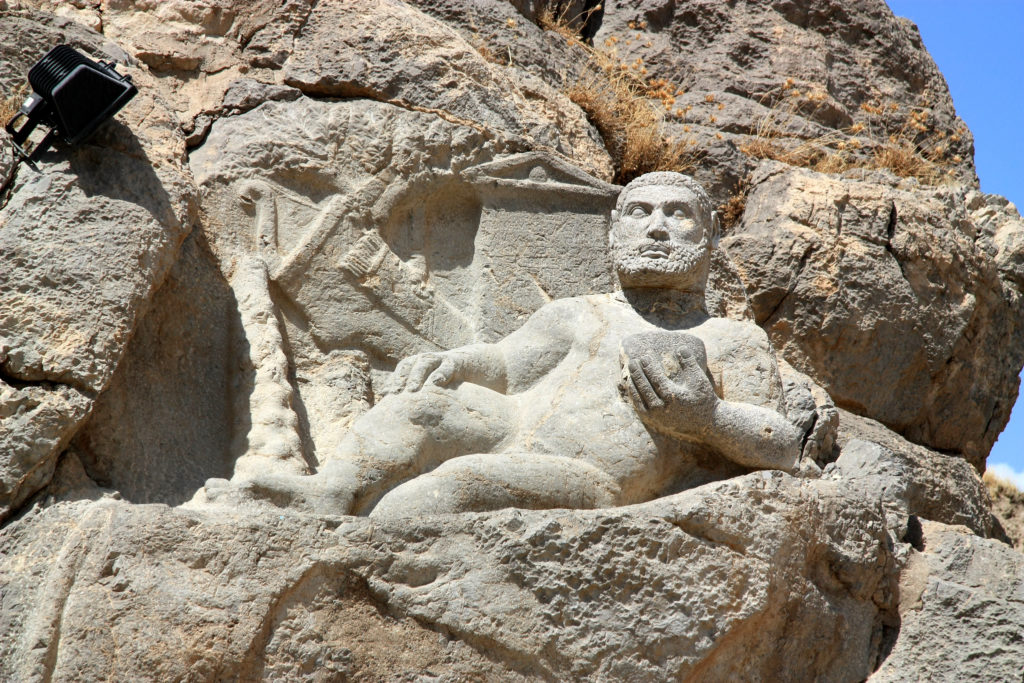
The mountain of Bisotun — meaning “the place of gods” — is a living chronicle of Persia’s layered history. Situated on the ancient route between Mesopotamia and the Iranian plateau, it bears marks of civilizations from prehistory to the Islamic period.
The most famous feature is the immense Achaemenid bas-relief commissioned by Darius the Great around 522 BCE, depicting his victory over rival kings. Nearby stand the remains of Parthian reliefs, a Hellenistic statue of Hercules, and the remnants of old caravanserais that once hosted travelers crossing the empire.
Each carving and inscription transforms the mountain into a storybook of empires, gods, and legends — a place where stone became a language of power.
9. Armenian Monastic Ensembles of Iran – West & East Azerbaijan

In the mountainous borderlands of northwestern Iran, near Armenia, lie the breathtaking Armenian Monastic Ensembles — a trio of ancient Christian sanctuaries that tell stories of faith, endurance, and cultural harmony. These include the St. Thaddeus Monastery, St. Stepanos Monastery, and the Dzordzor Chapel.
The oldest of the three, St. Thaddeus, dates back to the 7th century, though parts of it may trace to even earlier foundations. St. Stepanos Monastery, with its intricate stone carvings and fortress-like architecture, was originally built around the same era but later reconstructed during the Safavid period. The small Dzordzor Chapel, now relocated to higher ground due to dam construction, represents a perfect example of medieval Armenian craftsmanship — modest, spiritual, and deeply symbolic.
Together, these monuments form an extraordinary cultural landscape that reflects the blending of Persian, Armenian, and Byzantine influences. The surrounding scenery — lush valleys framed by rugged mountains — makes the experience even more moving. It’s not just the architecture that impresses; it’s the sense of continuity, faith, and coexistence that still lingers in the air.
10. Shushtar Historical Hydraulic System – Khuzestan
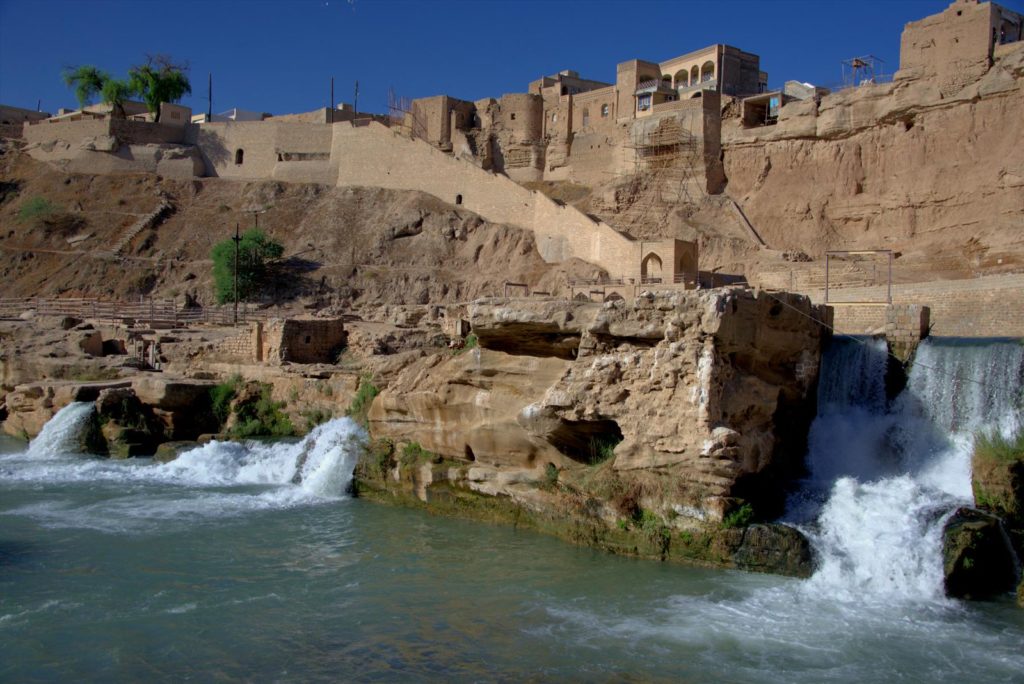
The Shushtar Historical Hydraulic System is one of the most remarkable engineering feats of the ancient world — a vast network of canals, dams, bridges, and watermills that turned arid land into fertile fields. Built during the reign of Darius the Great in the 5th century BCE, this complex stands as an early masterpiece of sustainable water management.
By channeling the Karun River into controlled streams, the engineers of Shushtar created artificial waterfalls and reservoirs that powered mills and irrigated farmlands. What’s astonishing is that the system still functions in part today — proof of the ingenuity of its builders.
Roman, Mesopotamian, and local Elamite influences converge in this design, showing how knowledge flowed across cultures even in antiquity. Standing by the cascades, one can still hear the roar of water that once sustained entire communities — a sound of life echoing through the centuries.
11. Sheikh Safi al-Din Khānegāh and Shrine Ensemble – Ardabil
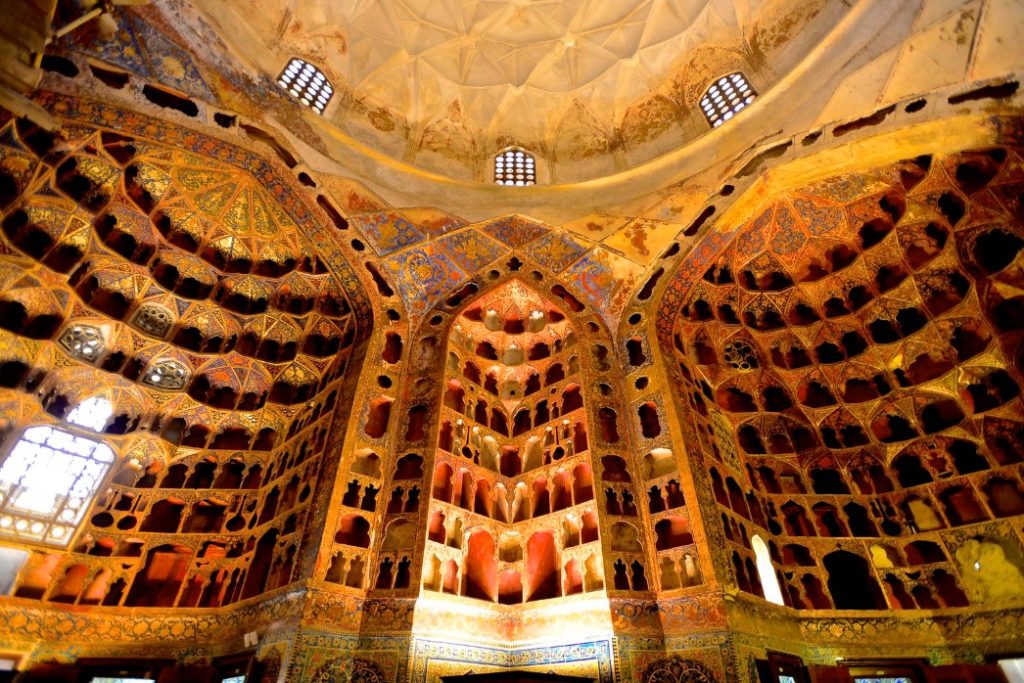
At the heart of Ardabil stands the Sheikh Safi al-Din Ensemble, a 16th-century complex that blends spirituality, art, and social purpose. Dedicated to Sheikh Safi al-Din, the founder of the Safavid order, this site embodies the essence of Sufi philosophy — unity, humility, and devotion.
The ensemble includes a khānegāh (Sufi lodge), mosque, school, mausoleum, library, and even kitchens for the poor. Each section is richly decorated with colorful tilework, calligraphy, and intricate stucco — every detail speaking of harmony between faith and beauty.
Safavid rulers, who descended from Sheikh Safi, continually added new sections and embellishments, turning the complex into both a sacred site and a showcase of Islamic art. Walking its corridors feels like stepping into a living museum of Persian spirituality — where devotion finds expression in geometry and light.
12. Tabriz Historic Bazaar Complex – East Azerbaijan
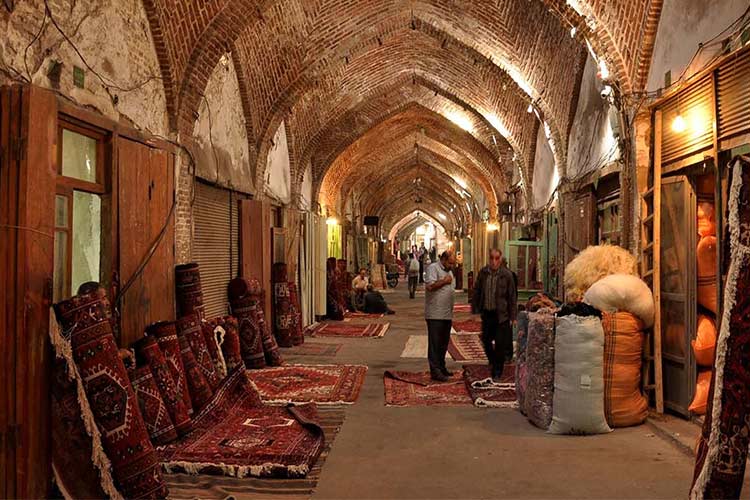
In the bustling city of Tabriz lies one of the world’s oldest and largest covered markets — the Historic Bazaar Complex, a vibrant labyrinth of vaulted halls, caravanserais, and courtyards.
Dating back over a millennium, the bazaar reached its peak during the 13th to 16th centuries, when Tabriz became a key hub on the Silk Road. Traders from the Caucasus, Anatolia, Central Asia, and beyond gathered here to exchange silk, spices, carpets, and stories.
The bazaar is not just a place of commerce — it’s a social and cultural heart where religion, politics, and art intersected. Its brickwork architecture, natural ventilation, and rhythmic domes are masterpieces of design and practicality. Even today, merchants conduct business in much the same way as their ancestors did centuries ago, preserving the timeless spirit of trade and hospitality.
13. The Persian Gardens – Across Iran

The Persian Garden, or Pardis — the origin of the English word paradise — represents the Persian ideal of harmony between nature and architecture. First conceptualized during the reign of Cyrus the Great in the 6th century BCE, Persian gardens were designed as earthly reflections of heaven.
Typically divided into four sections, known as Chahar Bagh (“Four Gardens”), these symmetrical layouts symbolize the four Zoroastrian elements: water, earth, wind, and fire. Water, flowing through narrow channels and fountains, lies at the heart of every Persian garden — creating life and serenity amid the arid landscape.
UNESCO recognizes nine examples across Iran, including the Eram Garden in Shiraz, Fin Garden in Kashan, and Chehel Sotoun in Isfahan. Each is a sanctuary of balance and beauty — where architecture, vegetation, and light come together in quiet perfection.
14. Gonbad-e Qābus – Golestan
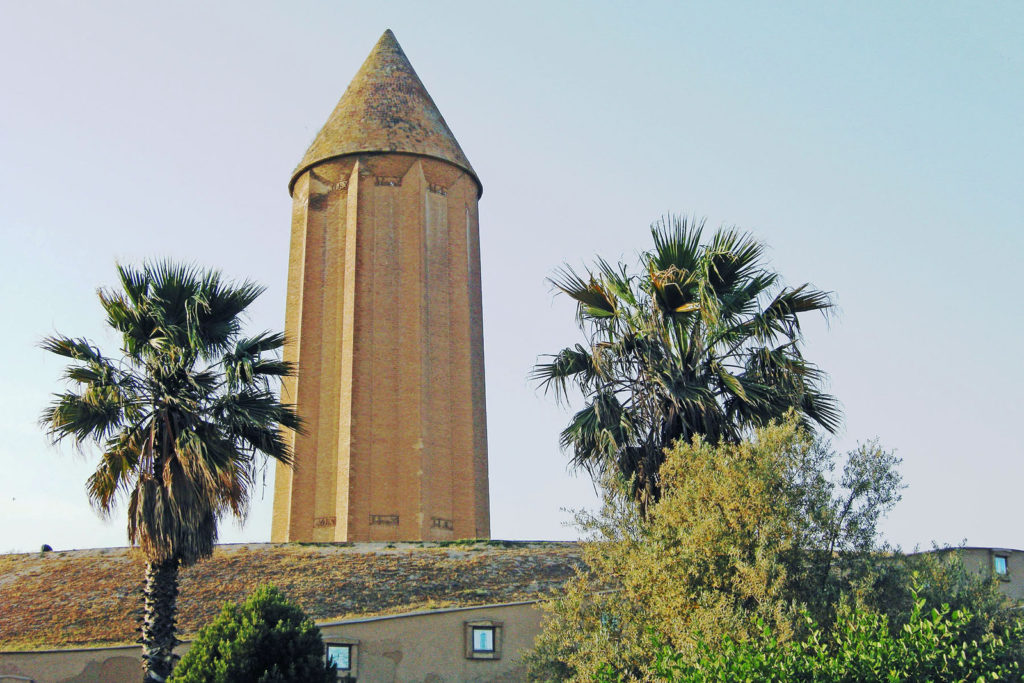
Soaring 72 meters into the sky, the Gonbad-e Qābus Tower is a masterpiece of early Islamic architecture and one of the tallest brick towers in the world. Built around 1007 AD by Sultan Qābus of the Ziyarid dynasty, it was constructed as both a mausoleum and a monument to science and poetry — disciplines that flourished under his patronage.
The structure’s unique ten-pointed star base and conical roof make it an architectural wonder. Using no mortar, the bricks were arranged in perfect geometry, giving the tower exceptional strength and elegance.
This monument later inspired countless mausoleums across Iran and Anatolia. Standing before it, one can sense how it bridges the human desire for immortality with the timeless beauty of mathematical design.
15. Masjed Jameh of Isfahan – Isfahan
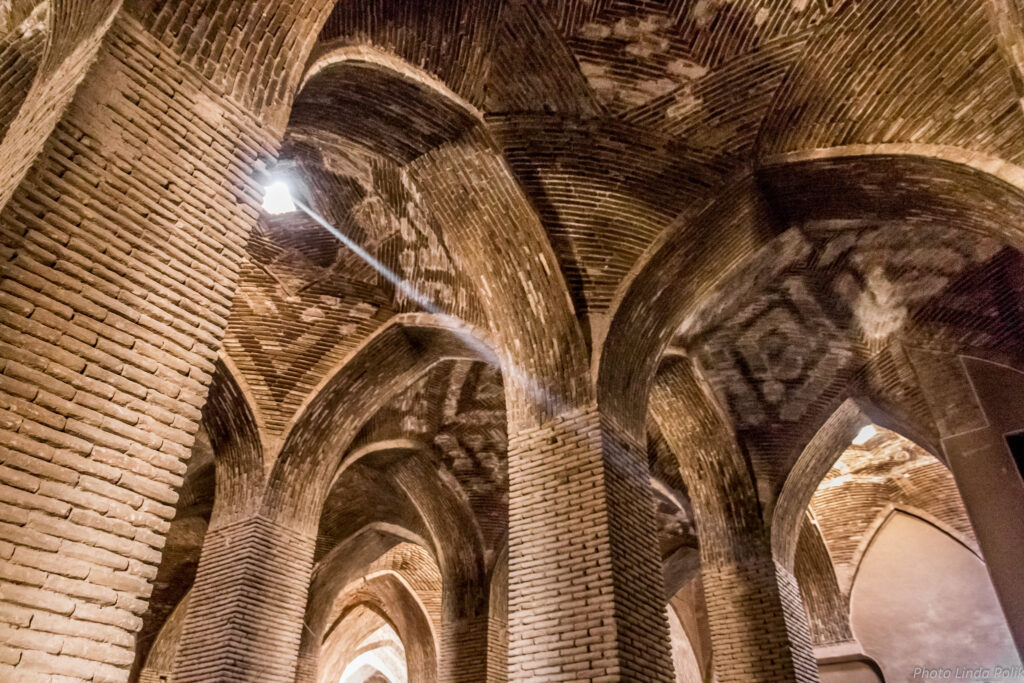
The Jameh Mosque of Isfahan is not merely a mosque — it’s a living chronicle of Islamic art and architecture. Construction began soon after the advent of Islam in Iran and continued for over a thousand years, resulting in a complex that embodies every major style in Persian-Islamic design.
The mosque became the prototype for the four-iwan layout — four grand arches facing each side of a central courtyard — which later influenced mosque architecture throughout Central Asia.
Step inside, and you’ll see why scholars call it a “museum of Islamic decoration.” From Kufic inscriptions to delicate muqarnas, every surface tells of evolving aesthetics and devotion. Even today, it remains a thriving place of worship, bridging the ancient with the present.
16. Golestan Palace – Tehran
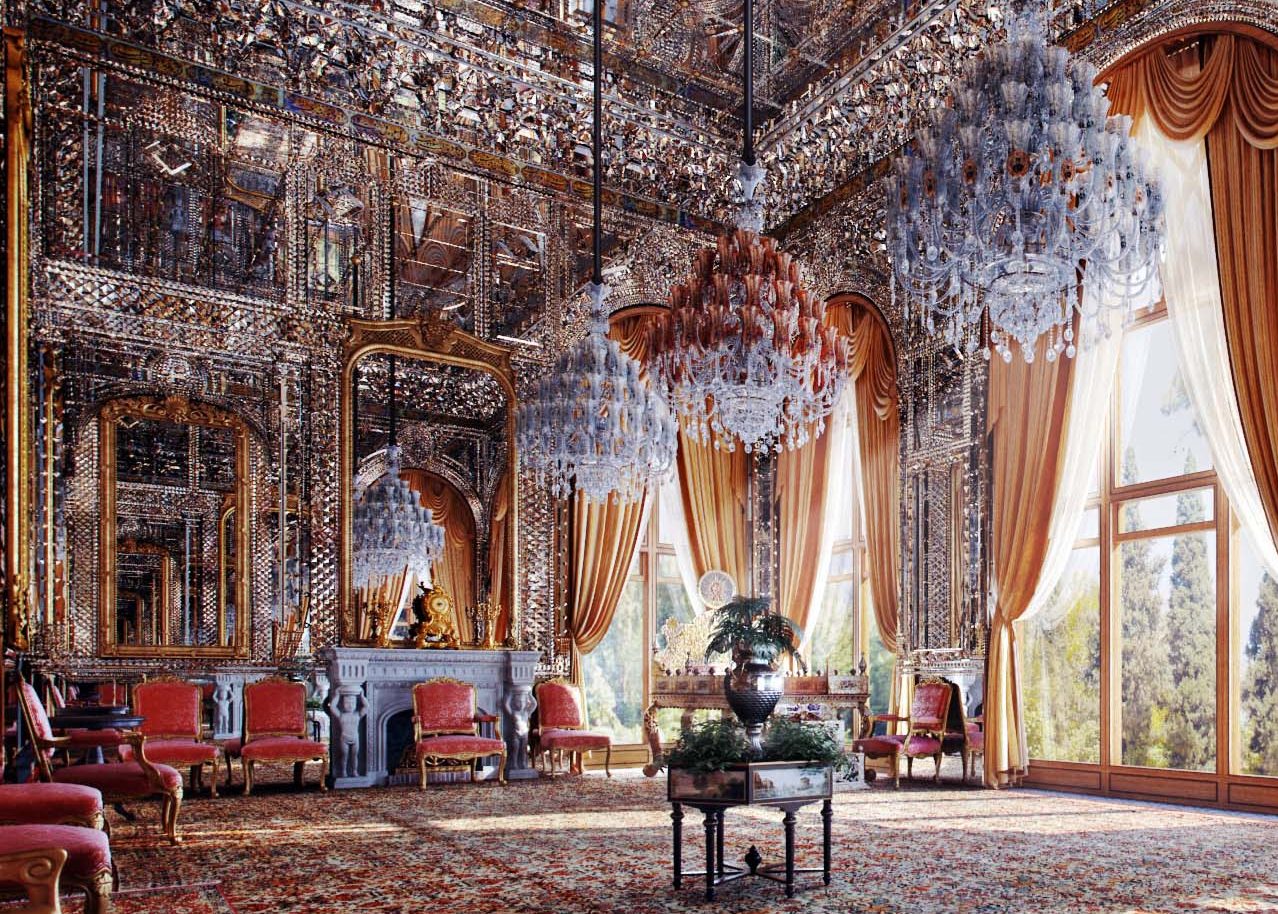
Located in the heart of modern Tehran, the Golestan Palace is a jewel of Qajar-era art and architecture. Though its foundations date back to the Safavid period, it was the Qajar kings who transformed it into a royal residence of unparalleled beauty.
The palace complex features halls adorned with mirror mosaics, colorful tilework, and exquisite stucco — a reflection of Iran’s artistic peak in the 19th century. The Shams-ol-Emareh tower, once the tallest building in Tehran, offered panoramic views of the city.
Golestan is not just an architectural marvel; it is a cultural symbol. Here, Persian tradition met European influence, creating a fusion of East and West that defined Iran’s transition into the modern age.
17. Shahr-i Sokhta (The Burnt City) – Sistan and Baluchistan

Deep in the southeastern desert lies Shahr-i Sokhta, or “The Burnt City” — an archaeological site revealing one of the world’s earliest urban civilizations. Dating back to around 3200 BCE, it offers fascinating insight into the dawn of city life.
Excavations have uncovered remarkable artifacts: the world’s oldest artificial eye, a backgammon board, intricate jewelry, and even evidence of brain surgery — all signs of an advanced and creative society.
The site illustrates the transition from rural to urban life, demonstrating early forms of craftsmanship and social organization. Its ruins whisper stories of prosperity, innovation, and mystery — a civilization that thrived, burned, and vanished, leaving behind echoes of brilliance.
18. Cultural Landscape of Maymand – Kerman
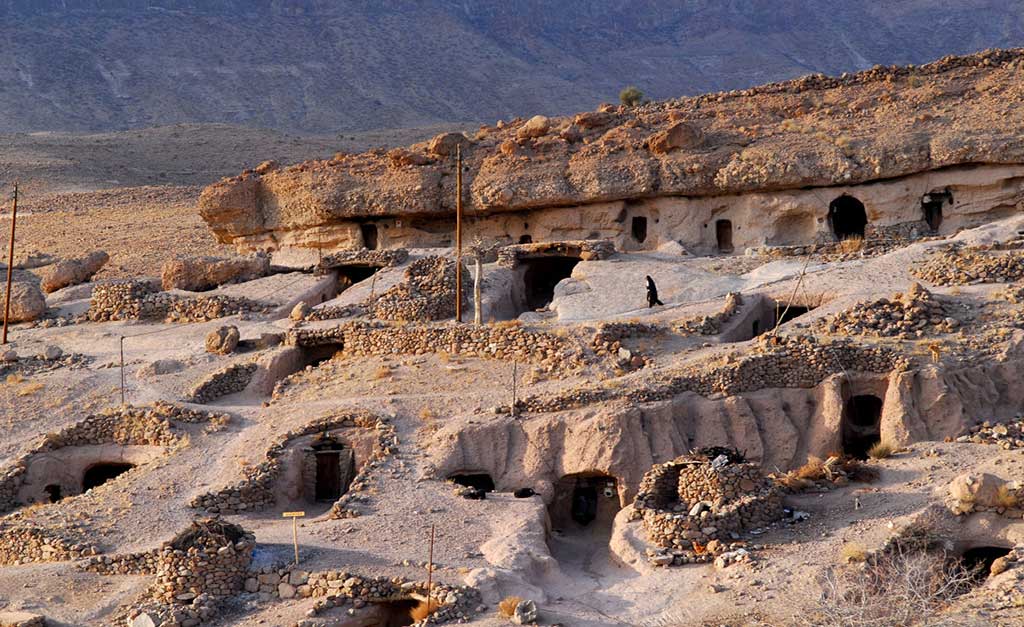
Hidden within the rugged mountains of Kerman province lies Maymand, one of Iran’s oldest continuously inhabited villages — and a living testimony to humanity’s resilience and adaptation to harsh environments. The settlement is thought to date back over 12,000 years, offering a glimpse into the Neolithic way of life that has survived remarkably intact through millennia.
Maymand’s residents are semi-nomadic agro-pastoralists who alternate between mountain pastures and cave dwellings carved directly into the rock. These stone homes are cool in summer, warm in winter, and perfectly aligned with the natural rhythm of the landscape. Every element of life here — from the design of the homes to the farming techniques — reflects harmony with nature.
Even today, Maymand’s people preserve ancient traditions, dialects, and crafts, making the village a rare example of living heritage. Wandering through its tunnels and stone chambers feels like entering a time capsule where human ingenuity and the raw spirit of survival meet.
19. Susa – Khuzestan
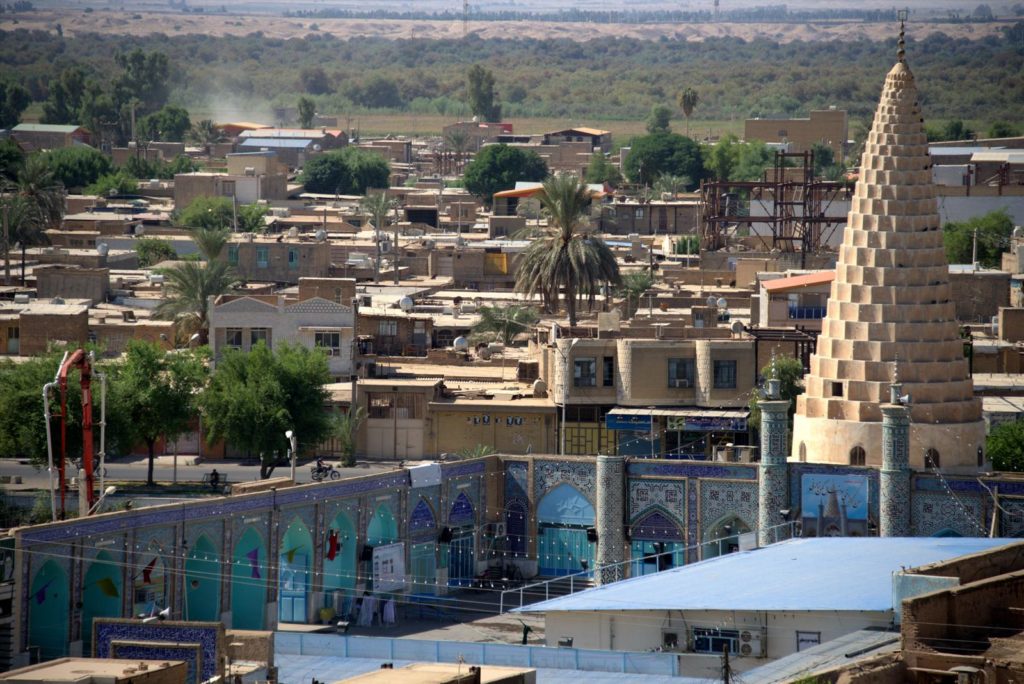
Once the vibrant capital of the Elamite, Achaemenid, and Parthian empires, Susa is one of the world’s oldest continuously inhabited cities. Its roots trace back to the 5th millennium BCE, when it stood as a crossroads of trade and culture linking Mesopotamia, Persia, and the Indus Valley.
Susa’s ruins tell the story of countless civilizations — the Elamites who first raised temples here, the Persians who built palaces, and even the Greeks who left traces during Alexander’s conquest. Excavations have revealed royal palaces, intricate ceramics, and the famous Code of Hammurabi stele, which was discovered here before being moved to the Louvre.
The site also houses the Tomb of Daniel, revered by Jews, Christians, and Muslims alike — a rare symbol of shared faith. Susa represents the blending of cultures and ideas that shaped the ancient world, making it one of the most important archaeological landscapes in the Middle East.
20. The Persian Qanat – Across Iran
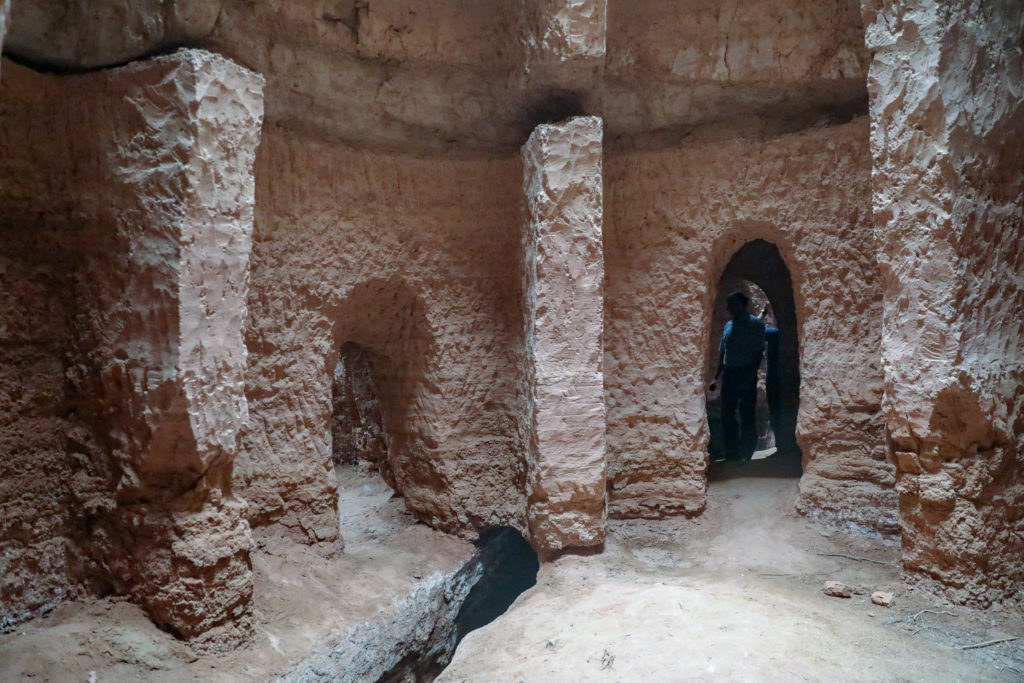
In a land where water means life, the Persian Qanat system stands as one of humanity’s most ingenious inventions. Dating back over 2,500 years, these underground aqueducts were developed to transport water from mountain aquifers to farmlands and settlements across Iran’s arid plateau.
Each Qanat consists of a mother well — the source of groundwater — connected to a long, gently sloping tunnel that channels water for kilometers, with vertical shafts dug at intervals for ventilation and maintenance. The system allowed communities to flourish in otherwise uninhabitable regions and influenced water management techniques as far away as North Africa and Spain.
Even today, many Qanats remain operational, sustaining villages and oases throughout the desert. Beyond engineering, they represent the deep respect Iranians hold for nature’s balance — a philosophy of sustainable living long before the term existed.
21. The Historic City of Yazd – Yazd
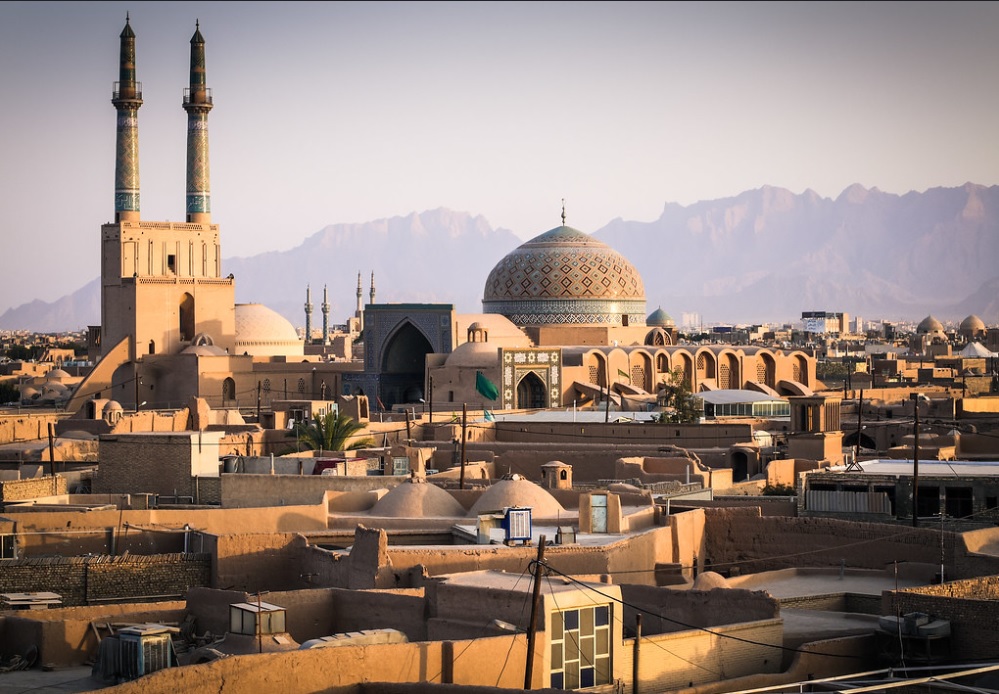
In the heart of Iran’s desert lies Yazd, a city of wind, clay, and light — where human innovation has turned an arid landscape into a masterpiece of urban adaptation. Recognized as one of the oldest continually inhabited cities in the world, Yazd’s architecture and lifestyle are shaped by the desert environment.
The city’s skyline is dotted with badgirs (windcatchers), ancient natural air conditioners that direct even the faintest breeze into the homes below. The buildings, constructed of adobe and mudbrick, maintain cool interiors while harmonizing beautifully with the ochre hues of the desert. Narrow alleyways lead to courtyards shaded by pomegranate trees, and beneath the city lies an intricate network of Qanats — silent rivers flowing through the sand.
Yazd has also been a stronghold of Zoroastrian culture, and its sacred fire temples still keep the eternal flame burning. As the sun sets, casting the city in a golden glow, it feels as though time itself slows — inviting you to simply breathe in its serenity.
22. The Sassanid Archaeological Landscape – Fars

In the rolling hills of Fars province, where empires once rose and fell, lies the Sassanid Archaeological Landscape — a collection of cities, palaces, and fortresses that reflect the glory of the Sassanid dynasty (224–651 AD). This region, the homeland of Ardashir I, founder of the Sassanid Empire, became the political and cultural heart of ancient Persia.
Among the highlights are the city of Ardashir Khureh (Gur) — a perfectly circular city that later inspired early Islamic urban planning — and the Sarvestan and Firuzabad Palaces, whose domed halls mark some of the earliest uses of large-scale vaulting in the world. The dramatic Qale Dokhtar (Maiden Castle) stands proudly atop a mountain, guarding the valley below like a silent sentinel from another age.
Together, these sites reveal the empire’s mastery of engineering, aesthetics, and strategic land use. The Sassanid landscape represents not only a lost civilization but also a bridge between the ancient and medieval worlds — a chapter of Persian history written in stone.
The Legacy of Iran’s World Heritage
From the deserts of Yazd to the mountains of Azerbaijan, from Persepolis’ grand stairways to the silent canals of Shushtar, Iran’s UNESCO World Heritage Sites are not isolated monuments — they are chapters of a single story. A story of creativity, tolerance, and perseverance spanning thousands of years.
Each site offers a different glimpse into the Persian identity: its reverence for nature, its devotion to beauty, and its ability to blend innovation with faith. Whether carved into rock, built from clay, or sculpted in gardens, these landmarks remind us that Iran has always been more than geography — it’s a civilization that taught the world how to build, dream, and endure.
And as you walk among its ruins or gardens today, you don’t just see history — you feel it, living quietly in the stones, the breeze, and the smiles of the people who call this ancient land home.




